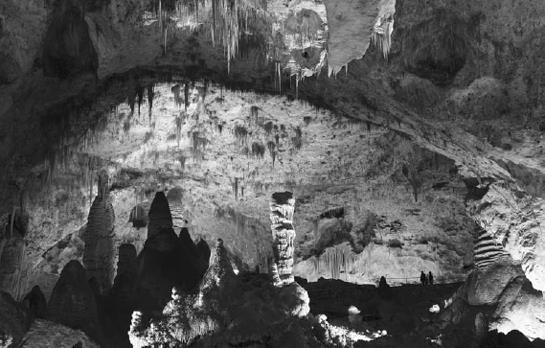EarthLand |
How does a stalactite differ from a stalagmite? |
A stalactite is a conical or cylindrical calcite formation hanging from a cave roof. It forms from the centuries-long buildup of mineral deposits resulting from the seepage of water from the limestone rock above the cave. This water containing calcium bicarbonate evaporates, losing some carbon dioxide, to deposit small quantities of calcium carbonate (CaCO3; carbonate of lime), which eventually forms a stalactite.
A stalagmite is a stone formation that develops upward from the cave floor and resembles an icicle upside down. Formed from water containing calcite that drips from the limestone walls and roof of the cave, it sometimes joins a stalactite to form a column.

